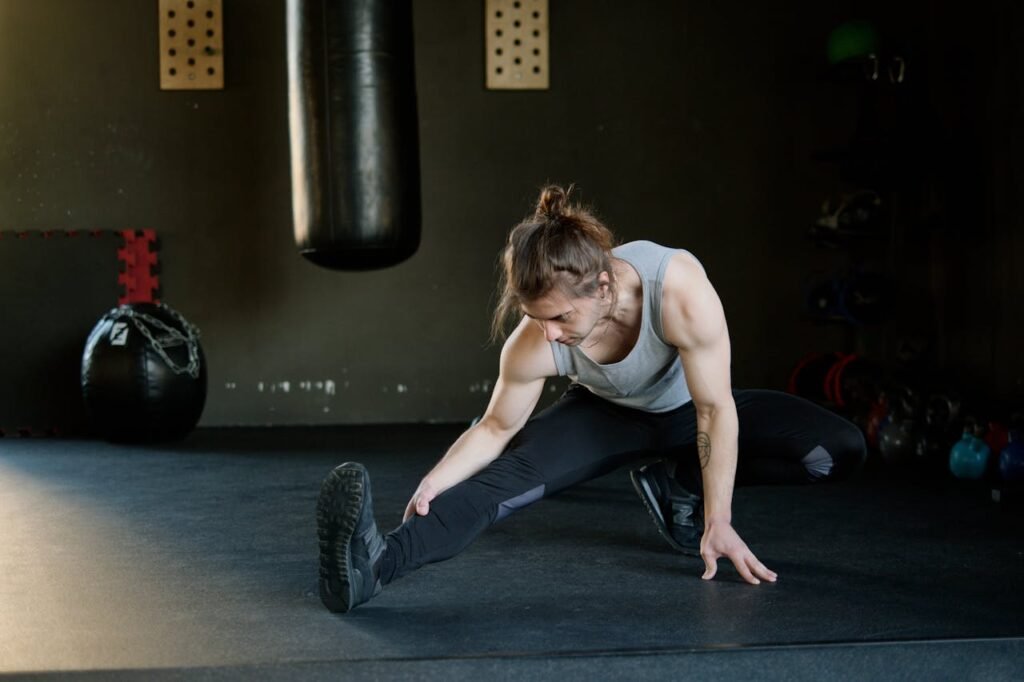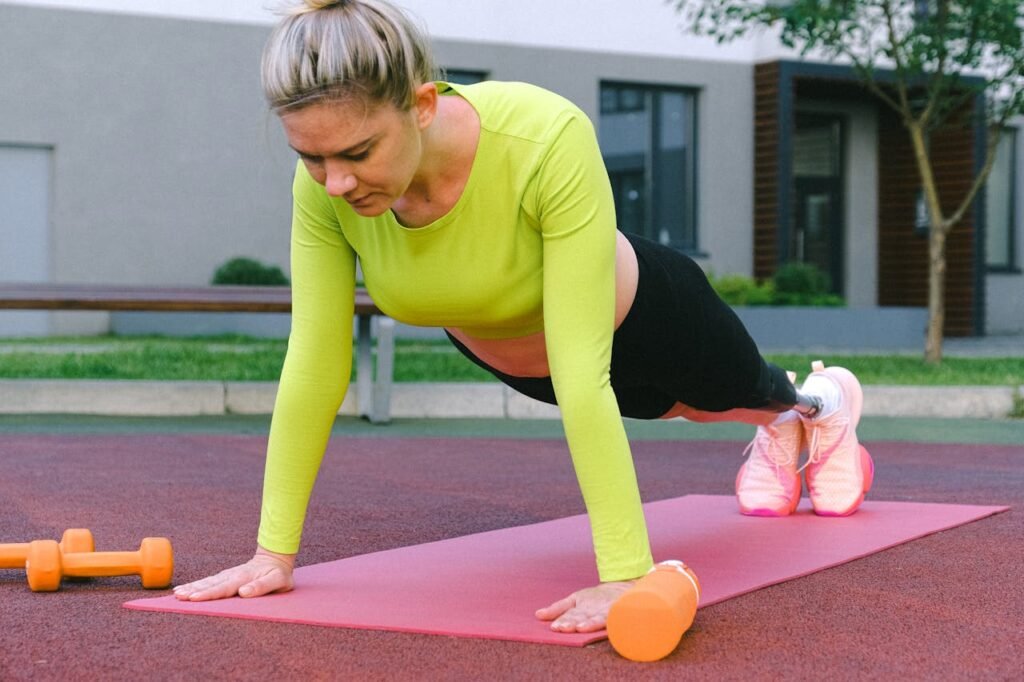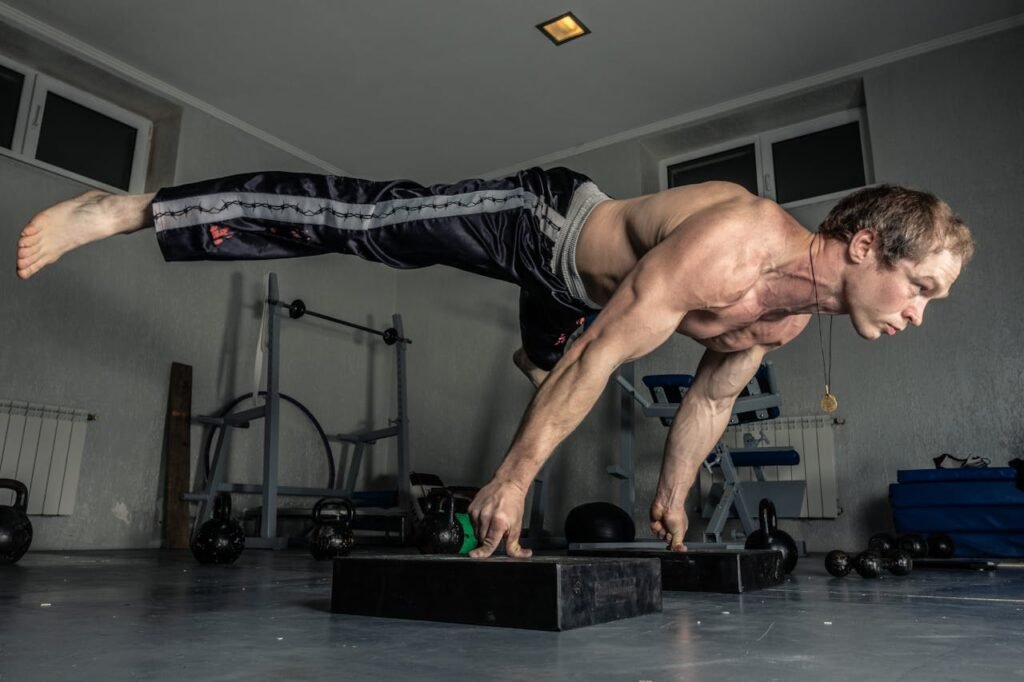High-Intensity Interval Training (HIIT) has gained immense popularity in recent years as one of the most efficient and effective methods for weight loss. It’s known for its ability to burn calories in a short amount of time, boost metabolism, and improve cardiovascular fitness. But how does HIIT work for weight loss, and how can you incorporate it into your routine? This comprehensive guide dives into the science, benefits, and practical strategies for using HIIT to achieve your weight loss goals.
Table of Contents
- What is HIIT?
- Definition and Key Components
- HIIT vs. Traditional Cardio
- How HIIT Promotes Weight Loss
- The Science Behind HIIT and Fat Loss
- Caloric Burn and the Afterburn Effect
- HIIT’s Impact on Metabolism
- Benefits of HIIT for Weight Loss
- Time Efficiency
- Fat Loss Without Muscle Loss
- Improved Cardiovascular Health
- Increased Insulin Sensitivity
- Popular HIIT Workouts for Weight Loss
- Tabata
- 30-20-10 Intervals
- Circuit HIIT
- Ladder HIIT
- How to Get Started with HIIT
- Choosing the Right HIIT Routine for Your Fitness Level
- Setting Realistic Goals
- Sample Beginner, Intermediate, and Advanced HIIT Routines
- Common Mistakes and How to Avoid Them
- Overtraining
- Skipping Warm-Ups and Cool-Downs
- Ignoring Form and Technique
- HIIT and Nutrition for Weight Loss
- Fueling Your Workouts
- Importance of Protein and Balanced Macros
- Hydration and Recovery
- Tips for Long-Term Success with HIIT
- Progression and Variety
- Tracking Progress Beyond the Scale
- Balancing HIIT with Rest Days and Recovery
- Is HIIT Right for Everyone?
- Who Should Avoid HIIT?
- Modifications for Specific Conditions
- Conclusion: Making HIIT a Sustainable Part of Your Weight Loss Journey
1. What is HIIT?
Definition and Key Components
High-Intensity Interval Training (HIIT) is a workout method that alternates between short bursts of intense activity and periods of low-intensity recovery or rest. These high-intensity intervals are typically performed at near-maximum effort, while recovery periods allow your heart rate to come down briefly before the next high-intensity bout. HIIT can be done with a variety of exercises, from sprints and jump squats to cycling and kettlebell swings.
HIIT vs. Traditional Cardio
Traditional cardio, like jogging or steady-state cycling, maintains a steady intensity over a longer period. HIIT, in contrast, condenses high-calorie-burning exercises into a shorter timeframe by pushing you to your maximum effort. Research suggests that HIIT can burn more calories in less time compared to traditional cardio, making it a preferred choice for those with busy schedules.
2. How HIIT Promotes Weight Loss

The Science Behind HIIT and Fat Loss
HIIT’s weight loss effectiveness is rooted in its ability to create a large calorie burn in a short period. The high-intensity intervals demand more oxygen, which pushes your body to tap into stored energy, primarily in the form of glycogen and fat.
Caloric Burn and the Afterburn Effect
HIIT is known for its ability to increase calorie expenditure even after the workout ends. This phenomenon, called excess post-exercise oxygen consumption (EPOC), or the “afterburn effect,” means that your body continues to burn calories as it recovers and repairs muscles from the high-intensity effort. Studies suggest that EPOC can last up to 24 hours after a HIIT session, further enhancing calorie burn and weight loss.
HIIT’s Impact on Metabolism
HIIT also increases metabolic rate, which can help maintain a calorie deficit crucial for weight loss. This elevated metabolism makes it easier for your body to burn calories throughout the day, even at rest.
3. Benefits of HIIT for Weight Loss
Time Efficiency
HIIT is incredibly time-efficient, making it ideal for people with busy schedules. A typical HIIT session can last anywhere from 15 to 30 minutes, yet it delivers similar (or better) fat-burning benefits compared to traditional cardio workouts of 45 minutes or longer.
Fat Loss Without Muscle Loss
HIIT focuses on high-intensity, short bursts of exercise, which helps maintain muscle mass while burning fat. The resistance and weight-bearing nature of many HIIT exercises stimulate muscle fibers, preventing the muscle loss that can accompany steady-state cardio.
Improved Cardiovascular Health
HIIT improves cardiovascular health by training the heart to respond to spikes in heart rate and recovery. Regular HIIT sessions can improve blood circulation, reduce blood pressure, and lower the risk of cardiovascular disease.
Increased Insulin Sensitivity
HIIT has been shown to improve insulin sensitivity, which helps the body use glucose more efficiently, aiding in weight management. Increased insulin sensitivity reduces the risk of insulin resistance and type 2 diabetes.
4. Popular HIIT Workouts for Weight Loss

There are various HIIT workout styles to keep your routine dynamic and effective. Here are a few popular ones:
Tabata
Tabata involves 20 seconds of high-intensity exercise followed by 10 seconds of rest, repeated for eight rounds (about four minutes). This structure is ideal for exercises like jump squats, burpees, and kettlebell swings.
30-20-10 Intervals
In this format, you perform 30 seconds of moderate-intensity, 20 seconds of higher intensity, and 10 seconds at maximum effort, followed by a brief rest. This structure works well for bodyweight exercises or cardio machines like the treadmill or rowing machine.
Circuit HIIT
Circuit HIIT involves moving from one exercise to the next with minimal rest. For instance, a circuit might include exercises like burpees, push-ups, mountain climbers, and jumping jacks, each performed for 30 seconds with a 15-second rest between each.
Ladder HIIT
Ladder HIIT gradually increases or decreases the intensity and duration of intervals. For example, you might start with 15 seconds of work and add five seconds each round until you reach one minute.
5. How to Get Started with HIIT
Choosing the Right HIIT Routine for Your Fitness Level
If you’re new to HIIT, start with a beginner-friendly workout with shorter high-intensity intervals and longer rest periods. As you build endurance, you can increase the intensity, shorten recovery times, or add more challenging exercises.
Setting Realistic Goals
Setting achievable goals, like completing two or three HIIT sessions per week, helps you maintain motivation. Progress may be gradual, so celebrate small achievements along the way.
Sample Beginner, Intermediate, and Advanced HIIT Routines
- Beginner: 20 seconds of bodyweight squats, 10 seconds rest, repeat for 10 rounds.
- Intermediate: 30 seconds of burpees, 15 seconds rest, followed by 30 seconds of jump squats, 15 seconds rest, repeat four times.
- Advanced: 40 seconds of sprints, 20 seconds rest, repeat 8-10 times.
6. Common Mistakes and How to Avoid Them

Overtraining
HIIT is demanding, so it’s essential not to overdo it. Overtraining can lead to injury, fatigue, and even counterproductive weight gain due to stress hormones. Allow at least 24–48 hours of rest between HIIT sessions.
Skipping Warm-Ups and Cool-Downs
A proper warm-up prepares your body for intense activity, while a cool-down helps prevent stiffness and injury. Spend 5-10 minutes warming up with light cardio and dynamic stretches, and cool down with static stretching after your HIIT session.
Ignoring Form and Technique
Poor form can lead to injuries, especially during explosive movements. Start with simpler exercises until you master the form, and prioritize quality over quantity in each interval.
7. HIIT and Nutrition for Weight Loss
Fueling Your Workouts
Eating a balanced meal with protein and carbohydrates 1-2 hours before HIIT can help fuel your performance. Post-workout, consume protein-rich foods to aid muscle recovery and promote fat loss.
Importance of Protein and Balanced Macros
Protein supports muscle repair and helps maintain muscle mass, which is crucial for sustainable weight loss. Aim for a balanced intake of macronutrients—proteins, fats, and carbohydrates— to fuel workouts and recover effectively.
Hydration and Recovery
Staying hydrated is essential for peak performance and recovery. Proper hydration helps prevent cramps, improves endurance, and supports metabolism. Replenish electrolytes after intense workouts, especially in hot conditions.
8. Tips for Long-Term Success with HIIT

Progression and Variety
Progression is vital for continued results. Gradually increase the intensity, duration, or complexity of your HIIT workouts to keep your body challenged. Adding variety also prevents boredom and reduces the risk of plateaus.
Tracking Progress Beyond the Scale
Tracking non-scale victories, such as improved endurance, reduced body measurements, and enhanced strength, can keep you motivated and provide a fuller picture of your progress.
Balancing HIIT with Rest Days and Recovery
Recovery is essential in a HIIT routine to prevent burnout. Listen to your body, incorporate rest days, and consider low-impact activities like yoga or walking on recovery days.
9. Is HIIT Right for Everyone?
Who Should Avoid HIIT?
While HIIT is safe for most people, those with certain health conditions, joint issues, or injuries should avoid or modify HIIT exercises. Pregnant women and beginners should consult with a healthcare professional before starting HIIT.
Modifications for Specific Conditions
If you have joint issues or prefer low-impact options, modify exercises like jumping jacks to step jacks or swap burpees for squats. Focus on intensity rather than impact to achieve similar results with minimal risk.
10. Conclusion: Making HIIT a Sustainable Part of Your Weight Loss Journey
HIIT is a powerful and efficient tool for weight loss, providing a high-calorie burn, boosting metabolism, and improving cardiovascular health. By incorporating HIIT into your routine, setting achievable goals, and balancing intensity with proper rest, you can make it a sustainable part of your fitness journey.
Remember, weight loss and fitness progress take time. Consistency, patience, and dedication are key. With HIIT, you can achieve your weight loss goals while also improving your overall health and well-being. Embrace the journey, and enjoy the benefits of high-intensity interval training as part of a balanced and fulfilling lifestyle.

